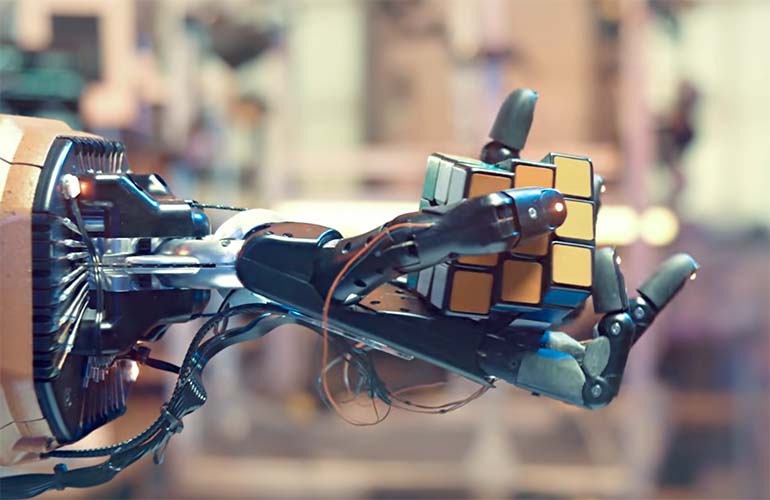OpenAI Abandons For-Profit Board: A New Governance Structure

Table of Contents
The Challenges of a For-Profit Model in AI Development
The inherent tension between profit maximization and responsible AI development has long been a source of concern. For-profit AI companies often face immense pressure to prioritize short-term financial gains over long-term ethical considerations and safety. This can lead to several critical issues:
- Prioritizing Profit Over Safety: The pressure to release products quickly, even if they are incompletely tested or have potential safety flaws, can lead to harmful consequences.
- Bias in AI Systems: The pursuit of profitability can incentivize the creation of AI systems that reflect and even amplify existing societal biases, leading to unfair or discriminatory outcomes. This can manifest in areas like loan applications, hiring processes, and even criminal justice.
- Lack of Transparency: For-profit structures often prioritize proprietary information, leading to a lack of transparency in AI development processes, hindering independent audits and scrutiny.
Details of OpenAI's New Governance Structure
OpenAI's new capped-profit structure aims to mitigate these risks. It represents a significant departure from the traditional for-profit model, prioritizing the long-term benefits of responsible AI development over immediate financial returns. Key features of the new structure include:
- New Board Composition: The composition of the governing body has been revised to include individuals with expertise in AI safety, ethics, and governance, ensuring a broader perspective on decision-making.
- Profit Distribution and Allocation: Profits are capped, and any excess revenue beyond a certain point will be directed towards furthering OpenAI's mission of safe and beneficial AI development. This is a fundamental change from the previous model where profit maximization was the primary goal.
- Revised Mission Statement: OpenAI's mission statement has been updated to reflect the shift in priorities, emphasizing safety, ethics, and the responsible deployment of AI technology.
Implications for the Future of AI Development and Ethics
OpenAI's bold move has far-reaching implications for the future of AI development and ethical considerations. It could serve as a model for other AI companies, potentially influencing the broader AI landscape in several ways:
- Increased Focus on AI Safety and Ethics: The shift towards a non-profit model could signal a broader industry trend, placing increased emphasis on safety research and ethical considerations in AI development.
- Potential for Slower Innovation: Critics might argue that reduced financial incentives could lead to slower innovation. However, proponents argue that a focus on safety and responsible development will ultimately lead to more robust and beneficial AI systems in the long run.
- Influence on the Regulatory Landscape: OpenAI's actions could influence the development of AI regulations, pushing for stronger ethical guidelines and oversight within the industry.
- Increased Collaboration and Open-Source Initiatives: The new structure might encourage increased collaboration and the sharing of research, fostering a more open and transparent AI ecosystem.
Criticisms and Counterarguments of OpenAI's New Model
Despite its positive potential, OpenAI's new governance structure isn't without its critics. Some concerns include:
- Long-Term Financial Sustainability: Concerns exist about the long-term financial viability of the capped-profit model, especially given the significant resources required for cutting-edge AI research. OpenAI counters this by emphasizing its commitment to securing sustainable funding through various avenues.
- Potential for Bureaucratic Inefficiencies: Some worry that the new structure could introduce bureaucratic inefficiencies, slowing down decision-making and hindering progress. OpenAI argues that the new governance model will foster more thoughtful and well-considered decisions.
- Limited Transparency: Critics point to a lack of complete transparency in the new governance model's inner workings. OpenAI maintains that it is committed to gradually increasing transparency while ensuring the protection of sensitive information.
Conclusion: OpenAI's New Path: A Pivotal Moment for Responsible AI
OpenAI's decision to abandon its for-profit board and embrace a capped-profit, non-profit model represents a significant turning point for the AI industry. The implications for responsible AI development and governance are profound, potentially influencing the future direction of AI research and deployment globally. This move highlights the growing awareness of the ethical challenges posed by advanced AI and the need for a more responsible approach. What are your thoughts on OpenAI’s new governance structure? Share your perspective on the future of AI governance in the comments below. Learn more about the evolving landscape of responsible AI development and engage in the crucial conversation surrounding "OpenAI Abandons For-Profit Board."

Featured Posts
-
 Todays Nba Playoffs Heat Vs Cavaliers Game 1 Predictions And Betting Analysis
May 07, 2025
Todays Nba Playoffs Heat Vs Cavaliers Game 1 Predictions And Betting Analysis
May 07, 2025 -
 Trumps Evolving Stance On Crypto From Critic To Millionaire
May 07, 2025
Trumps Evolving Stance On Crypto From Critic To Millionaire
May 07, 2025 -
 Lane Hutson A T Il Le Niveau Pour Etre Un Defenseur Numero 1 En Nhl
May 07, 2025
Lane Hutson A T Il Le Niveau Pour Etre Un Defenseur Numero 1 En Nhl
May 07, 2025 -
 Warriors Vs Hornets Basketball Game Time Tv And Live Stream Details March 3rd
May 07, 2025
Warriors Vs Hornets Basketball Game Time Tv And Live Stream Details March 3rd
May 07, 2025 -
 Kelsey Plum And Kate Martin Courtside Interaction Wins Over Aces Fans
May 07, 2025
Kelsey Plum And Kate Martin Courtside Interaction Wins Over Aces Fans
May 07, 2025
